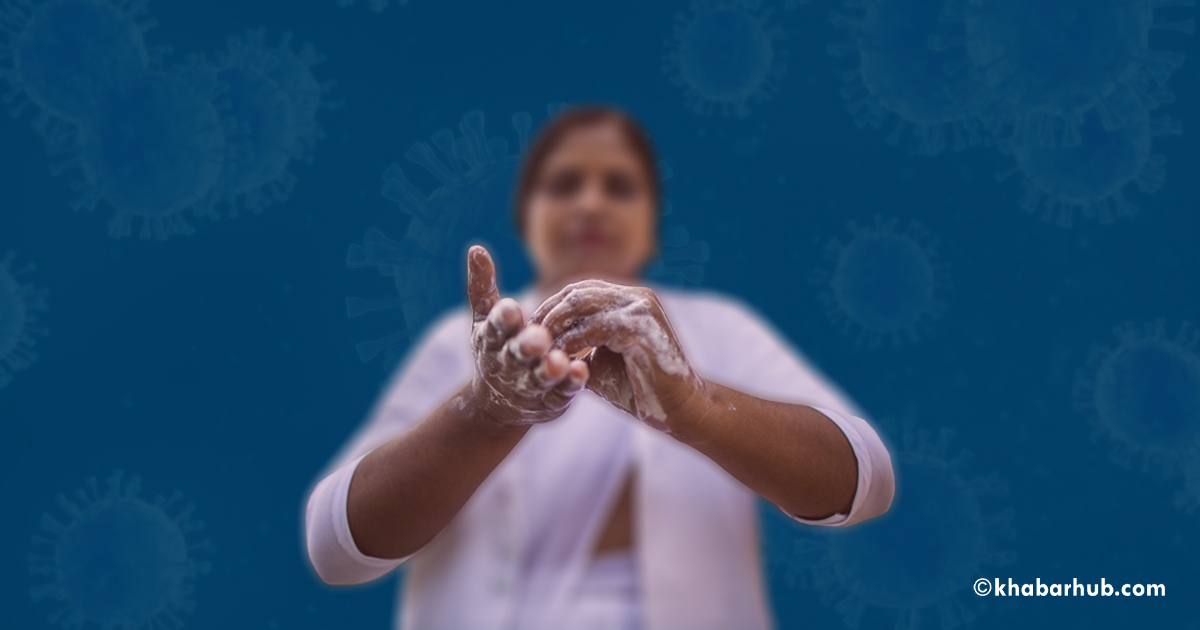Nepal has continuously been under threat because of the surge of COVID-19 cases inside the country as well as in India. The government has been extending the lockdown period in a bid to stem the spread of coronavirus.
People, however, are confused about whether the prolonged lockdown is the only solution to control the spread of the pandemic.
Even economically strong countries with ample resources have evidently failed the containment of this disease, Nepal, having limited care facilities and resources, needs to work over how to trace cases, isolate them, and contain the infection.
Nepal witnessed the first coronavirus death on May 16 followed by another death on in a couple of days. The toll has climbed to 14 as of June 8 amid the fear and uncertainty as to how the government will mitigate this problem efficiently.
It should be noted that the government has allowed even the private hospitals for testing, treatment and isolation purposes.
According to the Ministry of Health, more than 96,205 tests have been carried out using Polymerase Chain Reaction (PCR) method so far.
An effective strategy to work at the moment is to trace the returnees for COVID-19 and put them under “isolation” or “quarantine at home” and even if the test comes negative they must be asked to take necessary precautions and stay in contact with the nearby health centers.
The government has effectively handled the situation until now as the borders (Nepal-China) crossings have remained shut since January 2020, ground crossing point entry at Nepal-China and Nepal-India border has been strengthened and international flights remain suspended.
Amid this, a question arises: “Why isn’t the government not taking up responsibility for their citizens who are stranded at the border seriously?”
An effective strategy to work at the moment is to trace the returnees for COVID-19 and put them under “isolation” or “quarantine at home” and even if the test comes negative they must be asked to take necessary precautions and stay in contact with the nearby health centers.
Public awareness such as hand hygiene, social distancing, and cough etiquette needs to be thoroughly followed.
Amidst the rapid rise of cases, the system needs to focus on how to better manage the cases. The WHO has mentioned a few components as pillars for supporting the country’s preparedness and response to the outbreak.
Nepal, too, needs to work with better collaboration and coordination at all levels, planning and monitoring, surveillance, rapid response teams & case investigation, points of entry and case management.
Case management might be one of the biggest challenges the country faces in the upcoming days as the tolls rise.
Challenges regarding critical case handling and death might become an issue.
Providing appropriate PPE for health-care workers such as doctors, nurses, hospital staff, lab workers, cleaners, and drivers should be the priority.
The government should also focus on minimizing the exposure of contact of active and suspected cases.
Public awareness such as hand hygiene, social distancing, and cough etiquette needs to be thoroughly followed.
For asymptomatic travelers things to do at a place of residence/home:
- Stay at home except to seek medical attention
- Separate yourself from other people in your home (different room and a bathroom, if possible)
- Cover your sneezes and cough and dispose of the tissue immediately
- Wash your hands.
- Avoid sharing household items.
- Monitor your symptoms and seek medical attention if symptoms are worsening.
(Dr. Era Rawal is a doctor at Kathmandu Medical College and Dr. Ankita Agrawal is a doctor at the Nepal Army Institute of Health Sciences-College of Medicine)









Comment